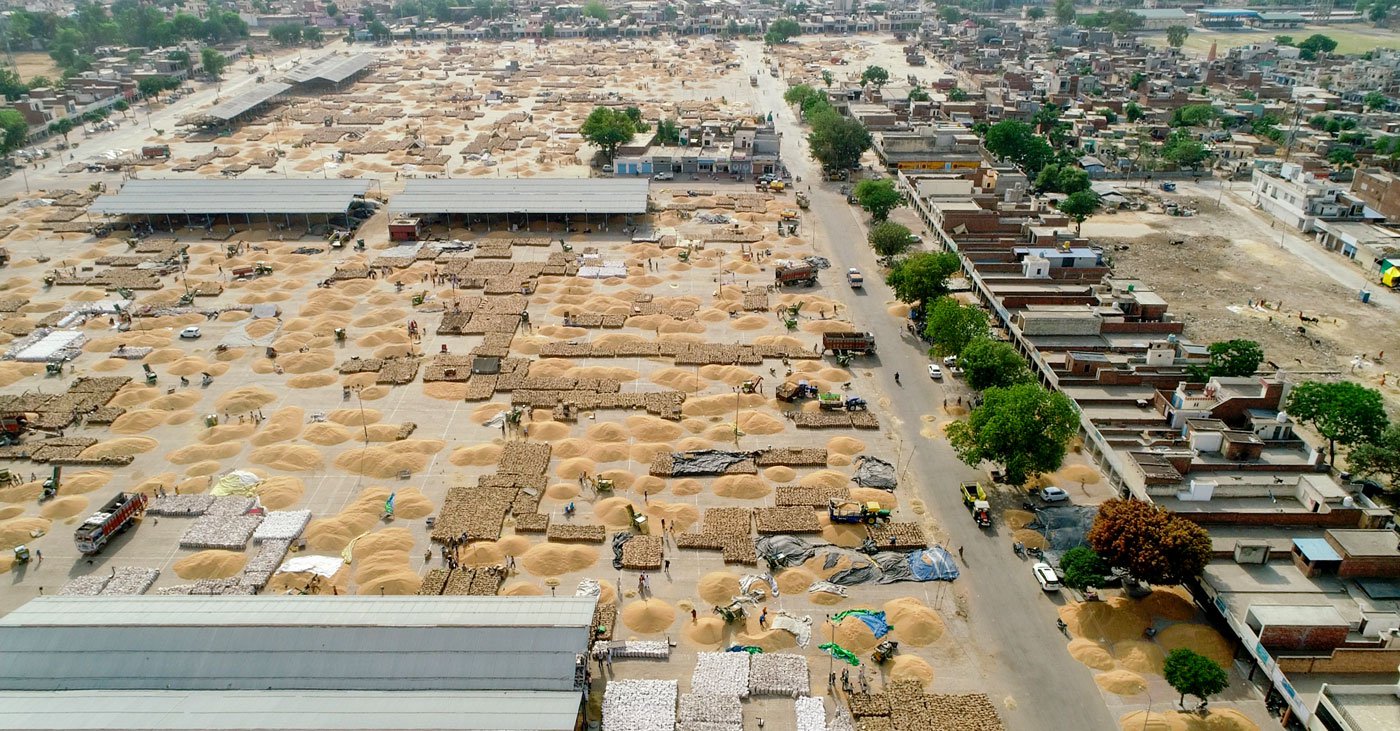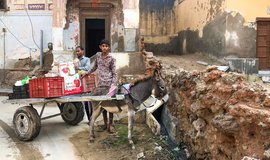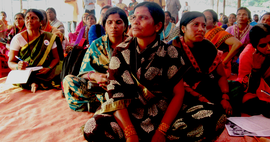It’s a massive grid – 152 main yards, 279 sub-yards and 1,389 purchase centres across Punjab (in 2019-20). Together, it forms a safety net for Jaswinder Singh. A farmer feels secure in this mandi system, says 42-year-old Jaswinder of Longowal town in Sangrur district, whose family cultivates 17 acres. “I can take my harvest to the mandi without any hesitation or fear knowing that I will get the money for it. I know the process and am certain I will get my due.”
Main (or principal) yards are huge mandis (like the one in Sunam in the photos here). These yards have various facilities and areas allotted to farmers to bring and pile their harvest, usually in front of the shops of their arhtiyas (commission agents)
https://ruralindiaonline.org/en/articles/punjabs-arhtiyas-sins-of-commission/
. Sub-yards are, broadly, additional nearby spaces if the area within a principal yard is inadequate for the produce that year. Purchase centres are smaller mandis , mostly in villages (like the Sheron mandi in the photos here). Together, these comprise Punjab’s vast Agricultural Produce Marketing Committee (APMC) network.
“When my crop is sold, I get a J-form from the arhtiya and that works as a security until the payment comes,” says Jaswinder. “But most importantly for me, since it is a government set-up, if anything untoward is to happen with my payment, I know I am protected under the law and that is a big security,” he adds (referring to the Punjab Agricultural Produce Markets Act of 1961).
The APMC network ensures that crops are procured in a regulated process by private traders or government agencies like the Food Corporation of India or Markfed (Punjab State Cooperative Supply & Marketing Federation Limited), which mainly purchase wheat and paddy at a state-mandated minimum support price (MSP). Once the grain reaches any of the mandis in Punjab, FCI or Markfed officials test its quality, according to specific standards like the amount of moisture it contains. Then the grain is auctioned and sold. The process is routed through the arhtiyas , who are a critical link in this chain.
Accessibility and reliability are major benefits of such a system, says 32-year-old Amandeep Kaur from Dugal Kalan village in Patran tehsil of Patiala district. “The most important thing for me is that I can take my produce right to the village mandi [purchase centre]. It is convenient and I know the rate I will get for my crop [as the MSP]. We have seen what is happening with sugarcane in the state. There is no centralised system for it, so farmers have to take their produce sometimes to one city then another wherever they get a better price. How can we wander about the state searching for a better price?"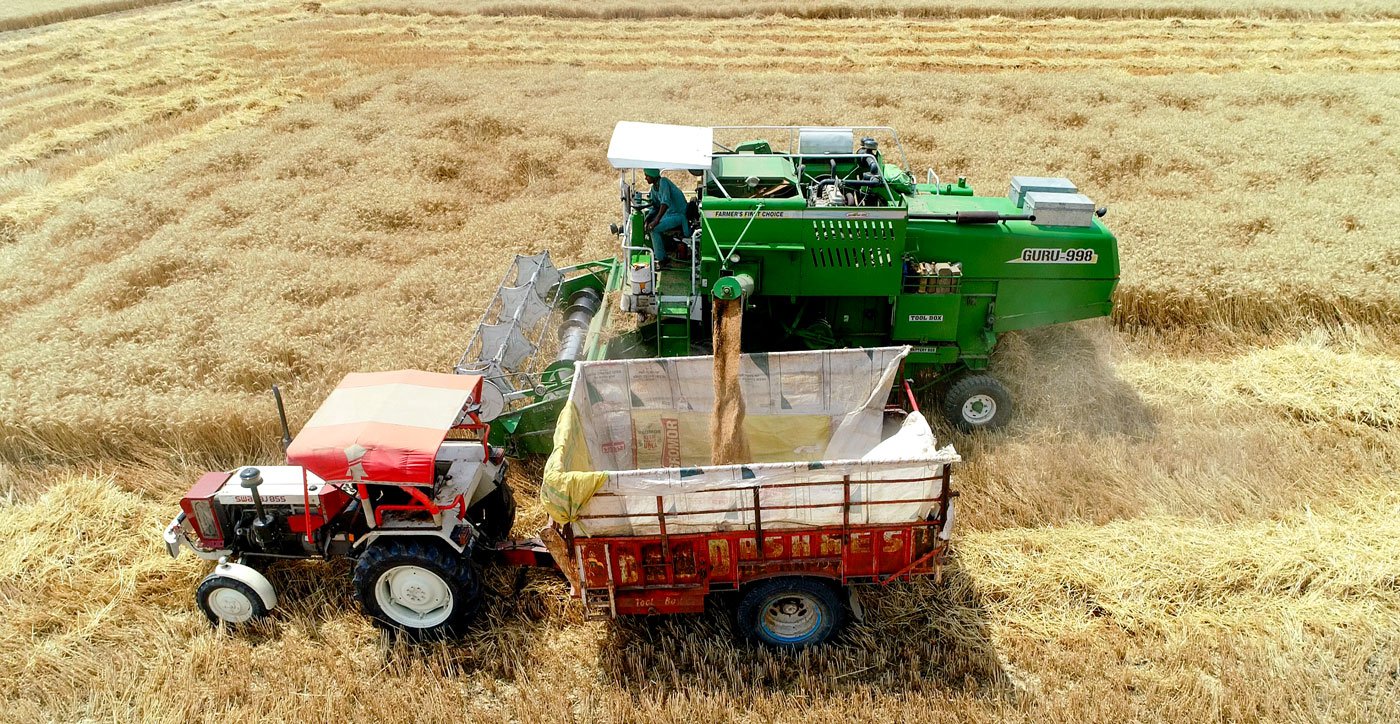
A combine unloads the wheat grain into a tractor, which will carry it to the nearby Sunam mandi in Sangrur district. This process is repeated multiple times over the day. The harvesting season starts around Baisakhi in mid-April and is at a peak for the next 10 days
Amandeep’s family cultivates 22 acres – six of their own and the remaining taken on lease. “We are very much dependent on the arhtiya too,” she adds. “For example, if it rains and our wheat harvest gets wet, we can leave it with the arhtiya in the mandi for even 15 days until it dries out and still be sure that it will sell. That will definitely not be possible in a private mandi. ”
"Once we sell our produce the payment comes after six months, but the arhtiya gives us money to sustain until the payments come,” says 27-year-old Jagjeevan Singh from Mangwal village in Sangrur tehsil (and district), who grows wheat and paddy on three acres. “Moreover, in a mandi I am certain that at least my costs will be covered because of the MSP.”
However, the Farmers’ Produce Trade and Commerce (Promotion and Facilitation) Act , 2020, aims to do away with middlemen and allow the farmer to sell his/her produce directly to the buyer. This could weaken the matrix of APMC mandis – along with arhtiyas and other links in a reliable marketing chain built over decades in Punjab, starting with the Green Revolution period around the mid-1960s.
The farmers protesting at Delhi’s borders are opposed to this law, which they fear will dismantle decades of this support groundwork. They are also protesting against the Farmers (Empowerment and Protection) Agreement on Price Assurance and Farm Services Act, 2020 , and the Essential Commodities (Amendment) Act, 2020 . And demanding that all three laws are repealed. These laws were first passed as ordinances on June 5 last year, then introduced as farm bills in Parliament on September 14 and hastened into Acts by the 20th of that month.
These protests began on November 26, 2020, and even earlier in Punjab – with stirs starting by mid-August that were in full force by September-October.
Punjab’s Arhtiyas Association supports the farmers’ protests. Ravinder Cheema, its president, says that mandis provide an option to the farmer to sell their produce. “Along with the government agencies, there are [private] traders also present at mandis . So if farmers feel they are not getting a good price then there is an option.” The new law will eliminate this bargaining power held by the farmer, and will also allow a trader to sell outside the mandis – which means no taxes (to be paid by the trader over the MSP). And so no trader will come to the mandis to procure, says Cheema, and that is how the APMC system will slowly become redundant.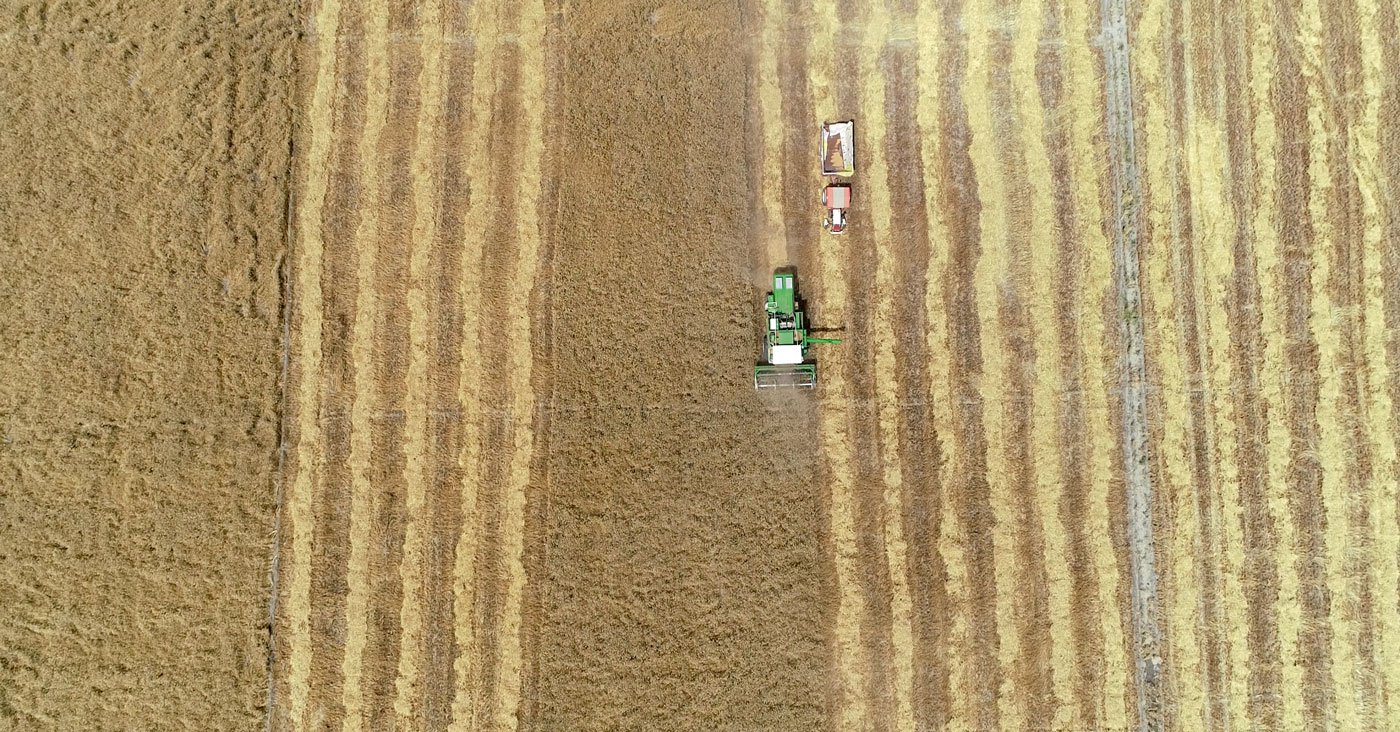
The process of harvesting in Punjab is mostly mechanised after the Green Revolution era. Around 176 lakh tons of wheat was produced in the state during 2019-20, which was grown on roughly 35 lakh hectares with an average yield of 20.3 quintals per acre
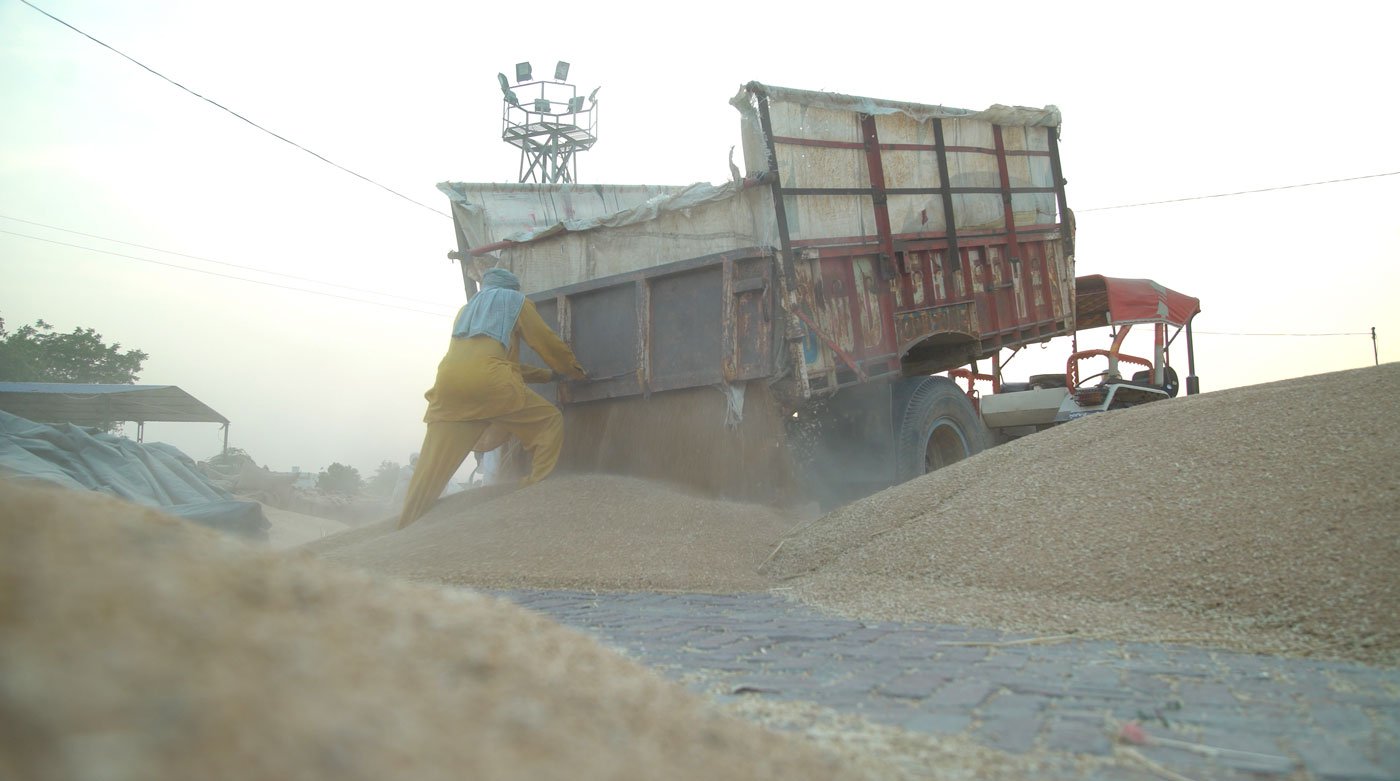
Unloading wheat at the Sunam
mandi
in Sangrur district on April 14, 2021
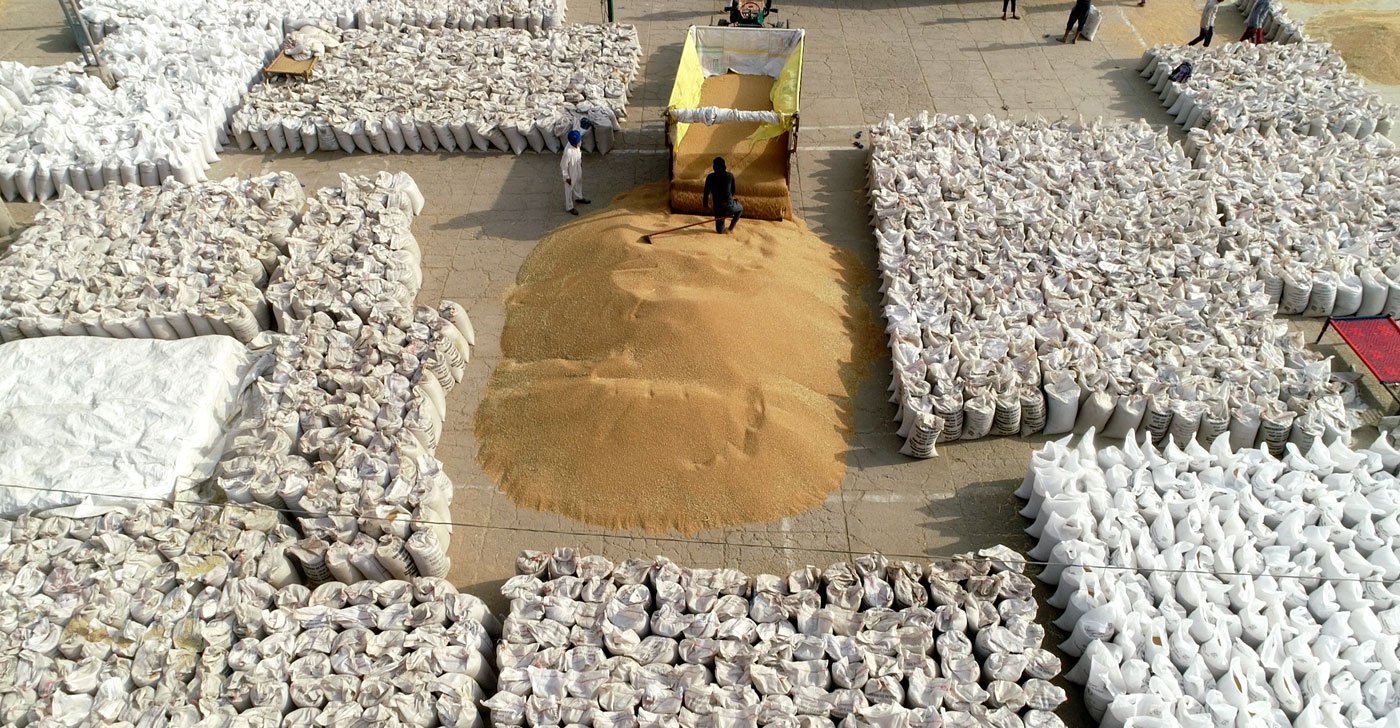
All the farmers bring their produce to the mandis to be auctioned: around 132 lakh metric tons of wheat was procured by state and central government agencies in 2021 (with private traders buying less than 1 per cent of the total produce)
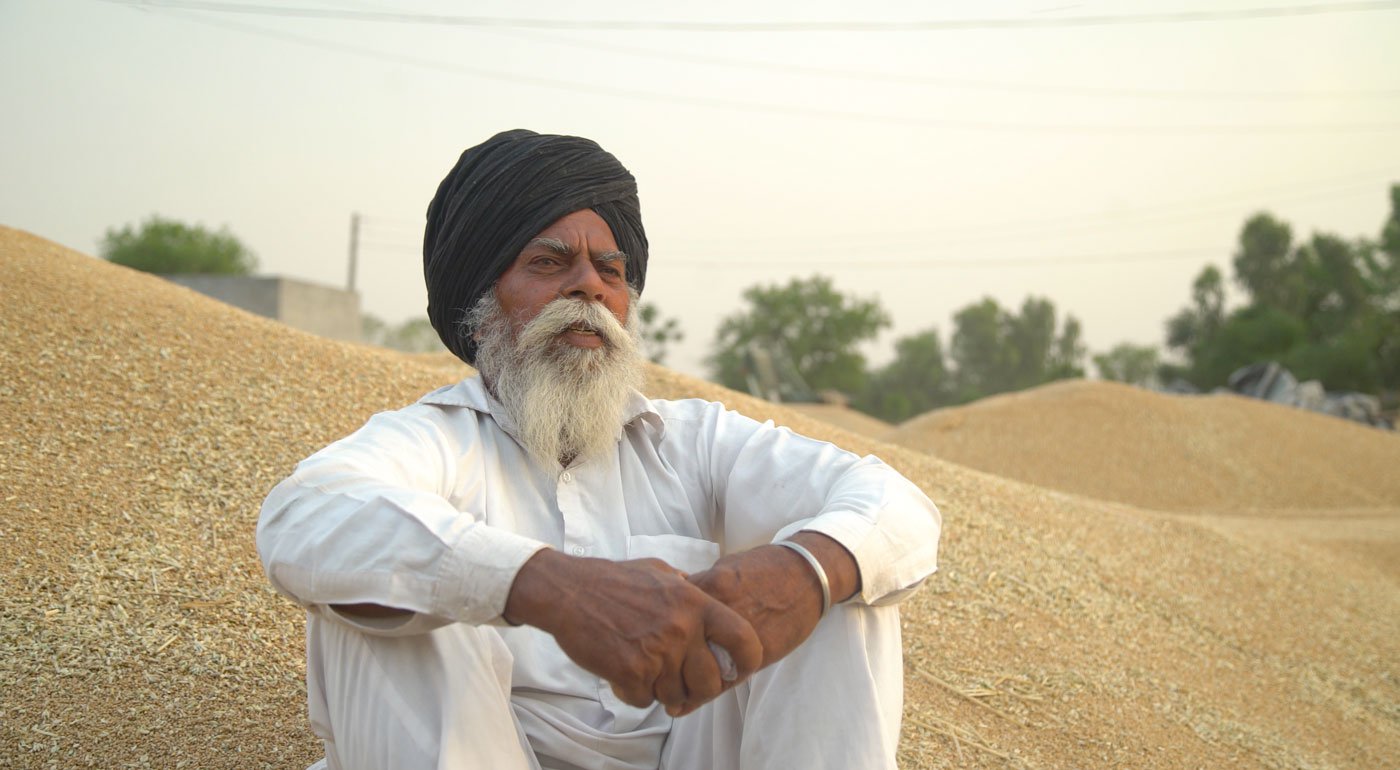
Roop Singh, a 66-year-old farmer from Sheron village in Sangrur district: he was been sitting in the local mandi with his produce since it arrived and will continue to be there it is packed and sold – the process can take between 3 and 7 days
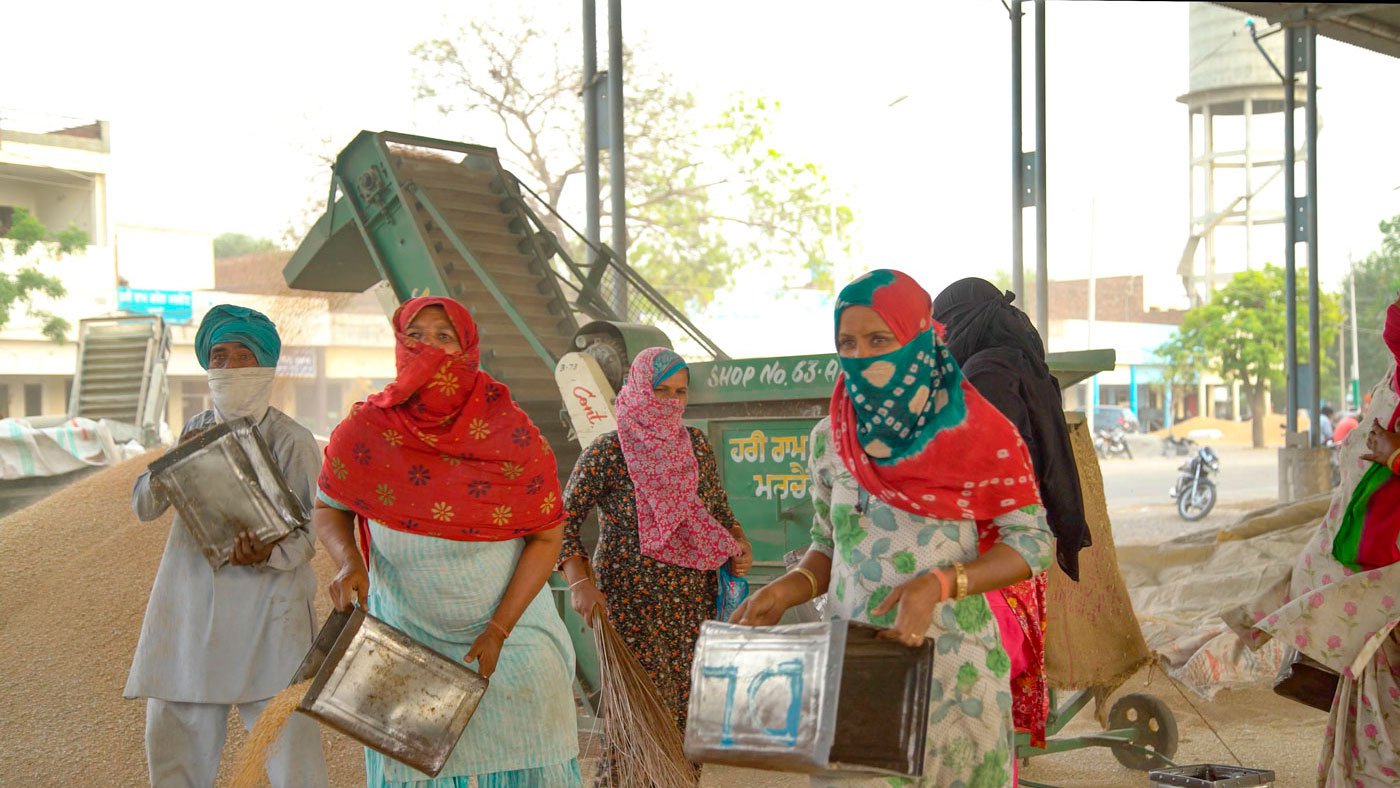
Women labourers carrying wheat to the thresher, where the husk is removed from the grain, at the Sunam yard. Women form a major portion of the workforce at the mandis
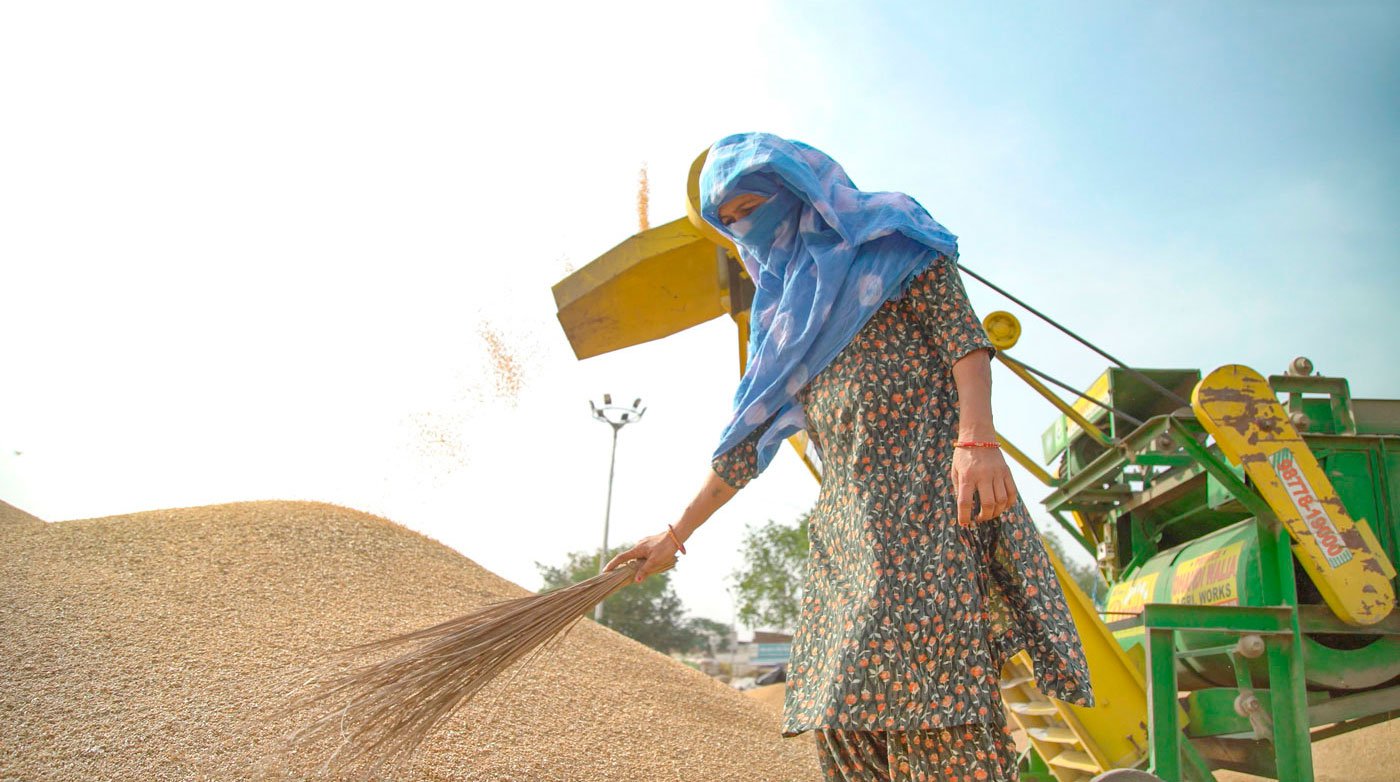
A labourer cleans a pile of wheat to remove any traces of husk from top, with the thresher in action behind her, at Sunam mandi
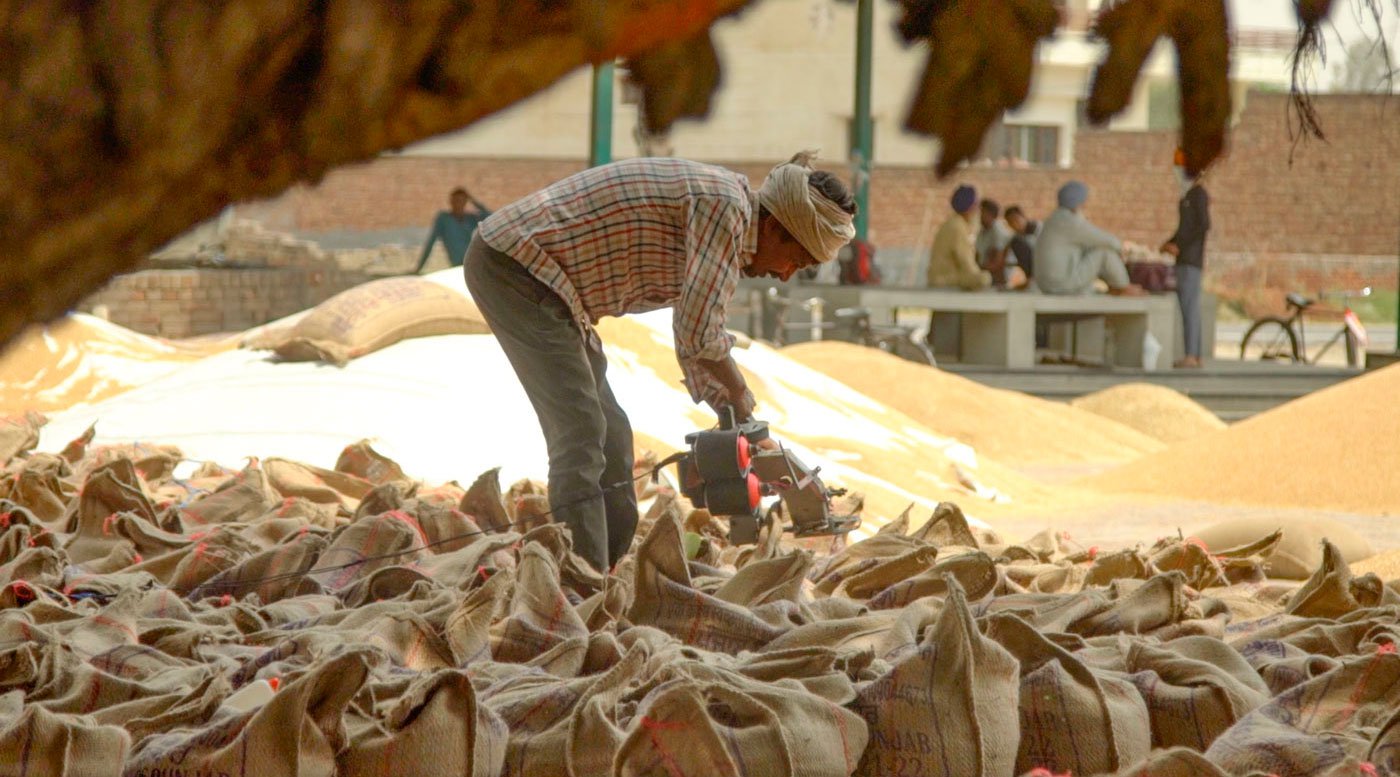
A labourer at the Sheron mandi sealing the bags of wheat after it is sold. The labourers are hired by the arhtiyas for this process
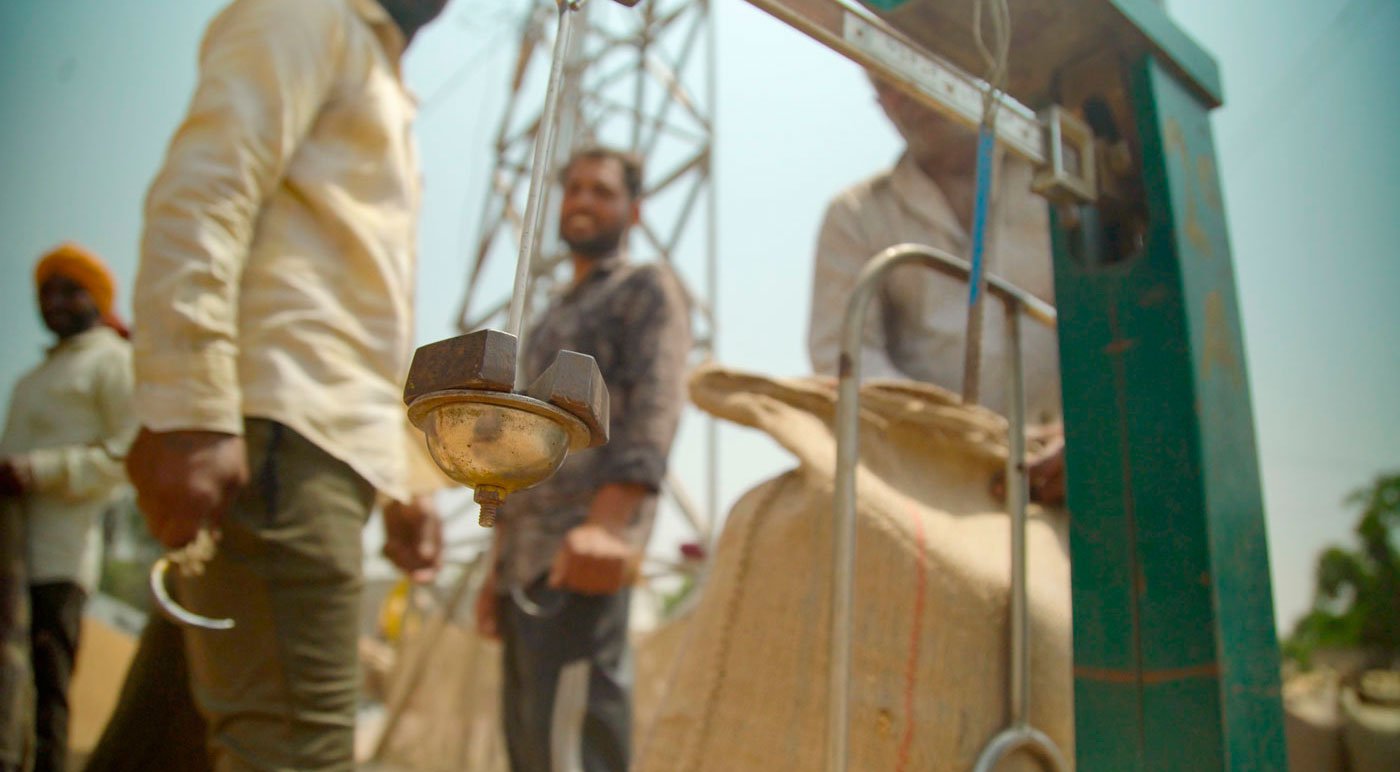
At the Sheron mandi , April 15, 2021: weighing of the wheat
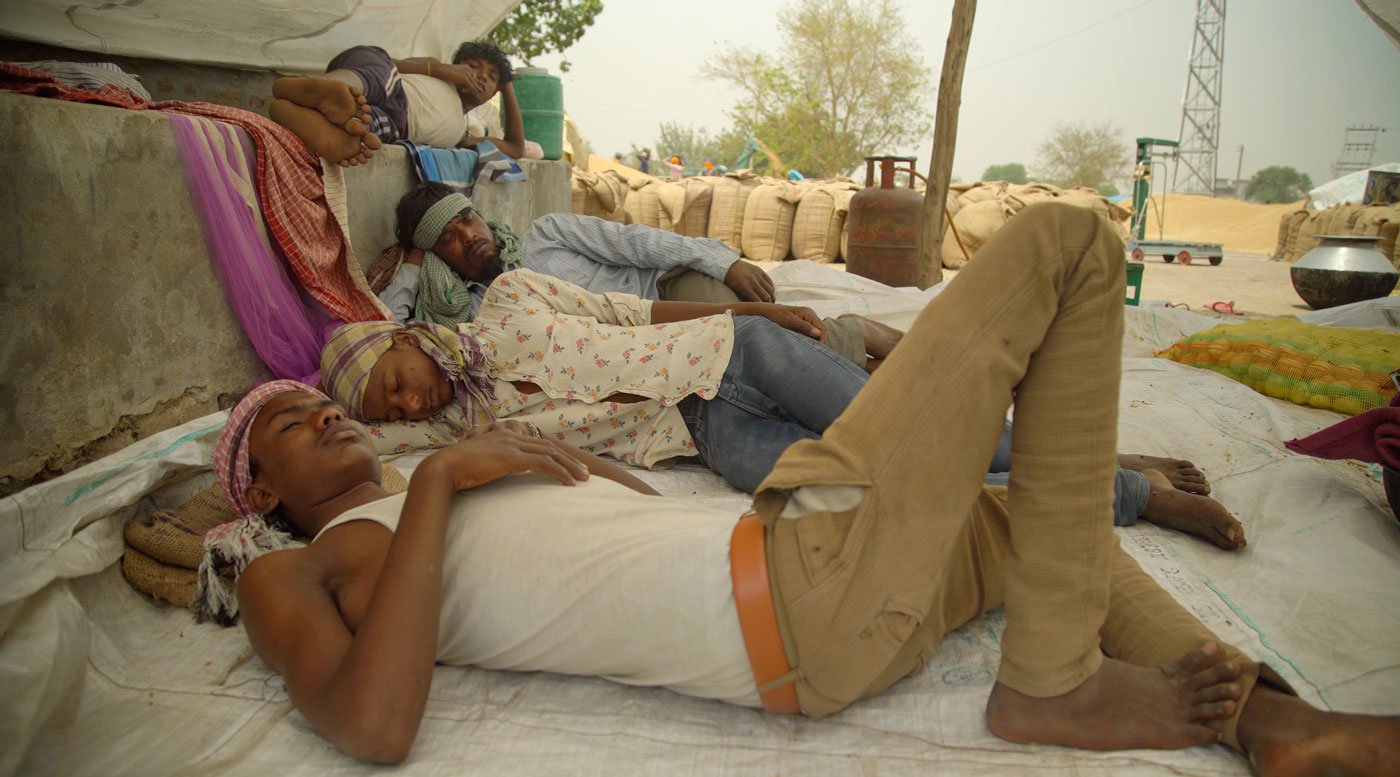
Resting during
the afternoon at the Sheron
mandi.
Most of the labourers here now come from Bihar and Uttar Pradesh
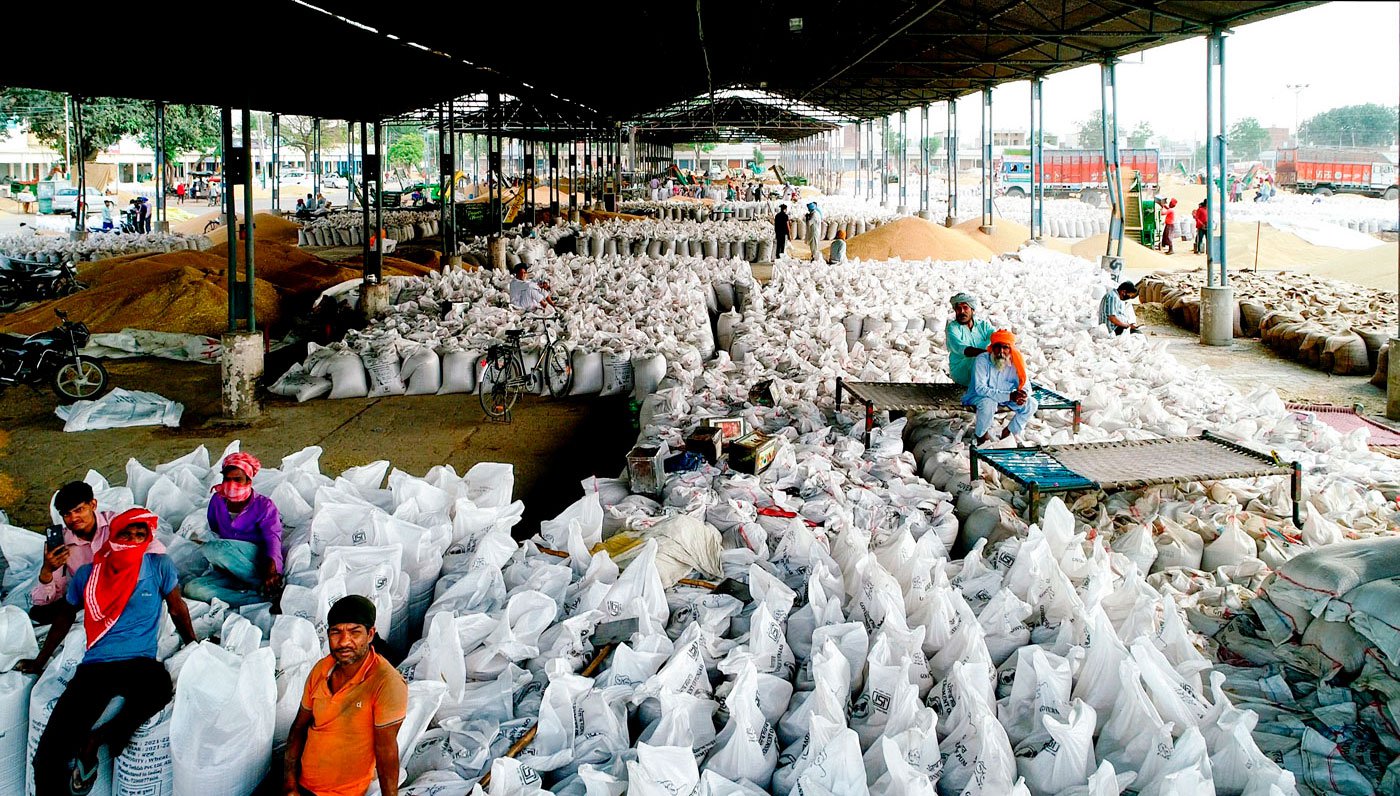
Labourers and farmers at the Sunam mandi resting on sacks of wheat which contain the stock purchased by government agencies
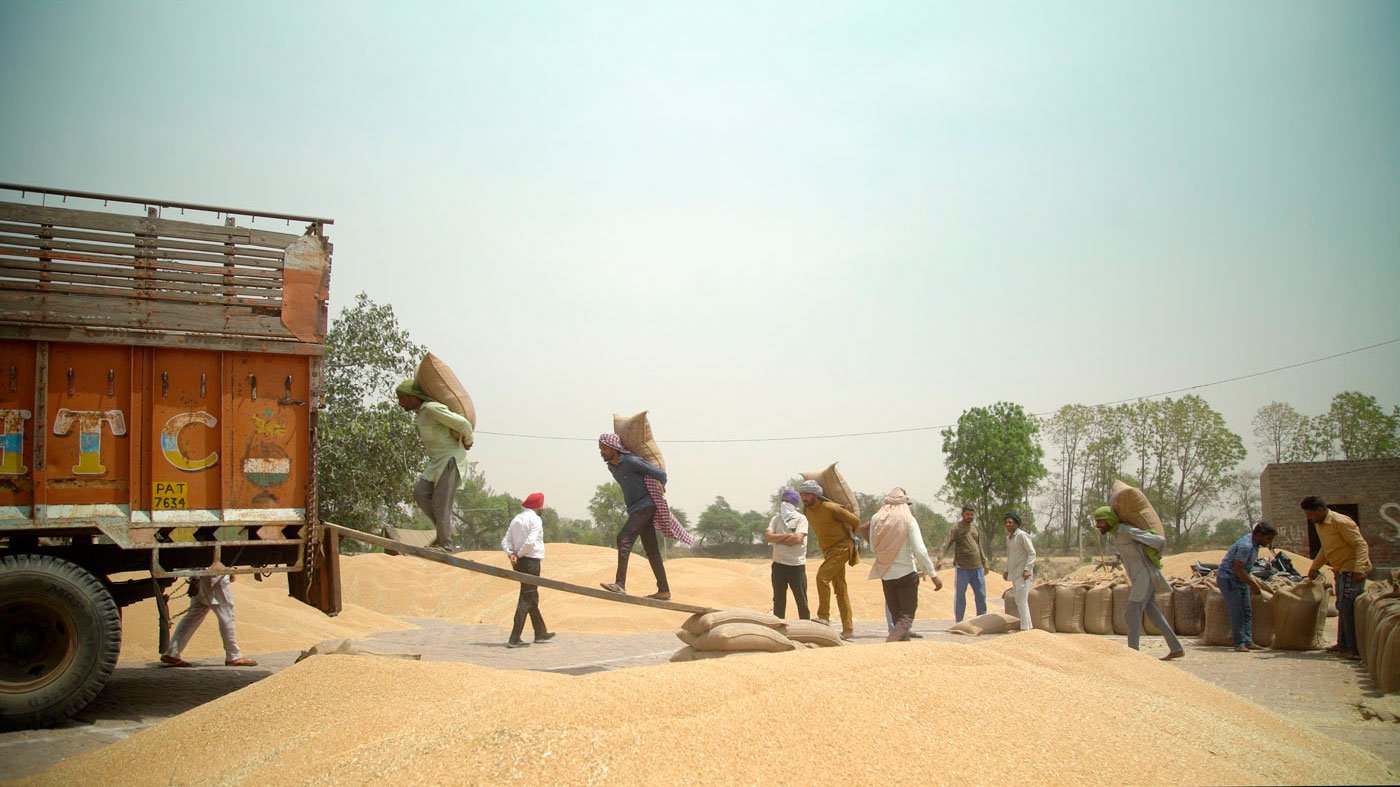
The sold wheat bags being loaded into trucks that will carry the produce to godowns and markets

Workers in the evening at the Sheron mandi. The scale of wheat harvesting is massive during the peak days, so they extra work long hours, with tractors full of grains arriving even during the night
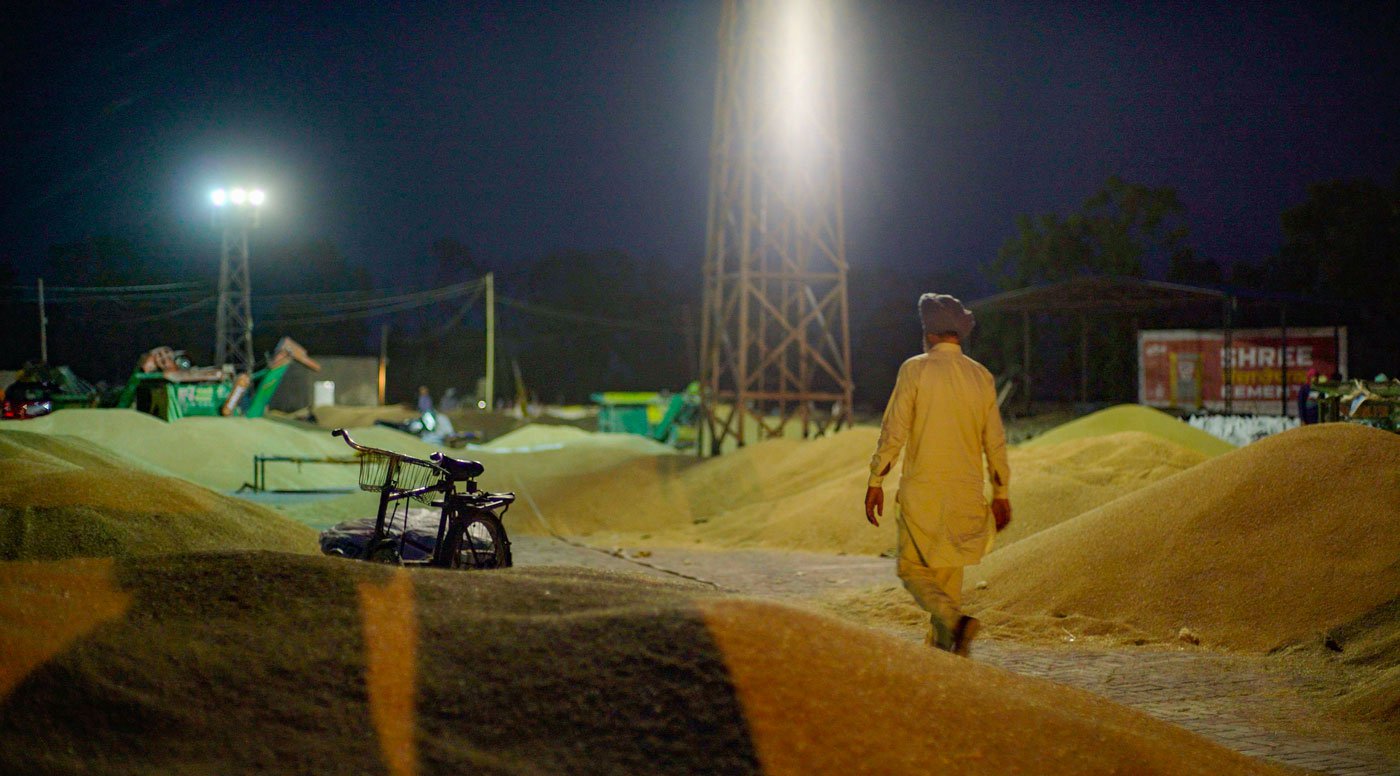
A farmer walks in the piles of wheat yet to be sold at the Sheron mandi

Farmers sitting and chatting at the Sheron mandi
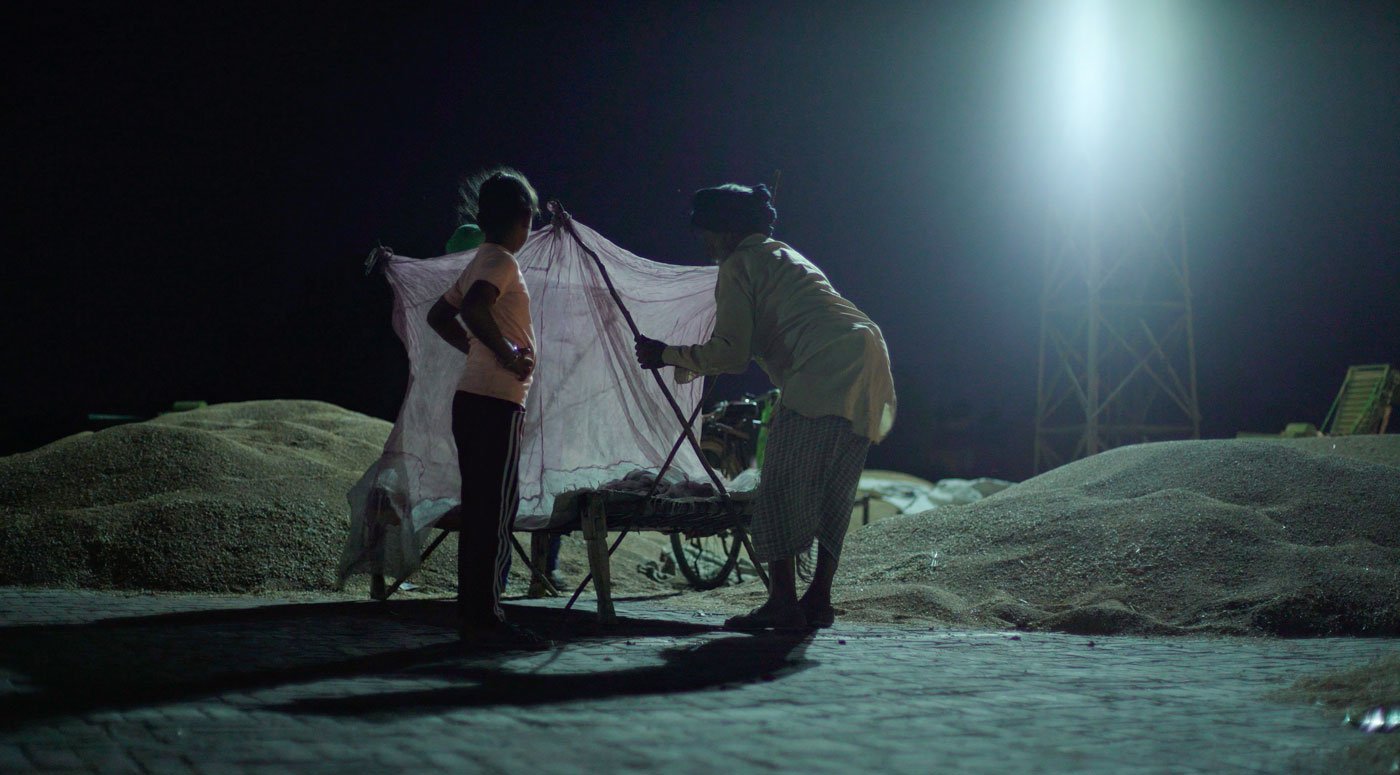
A farmer sets up his bed for the night at the Sheron mandi to guard his produce until it is sold
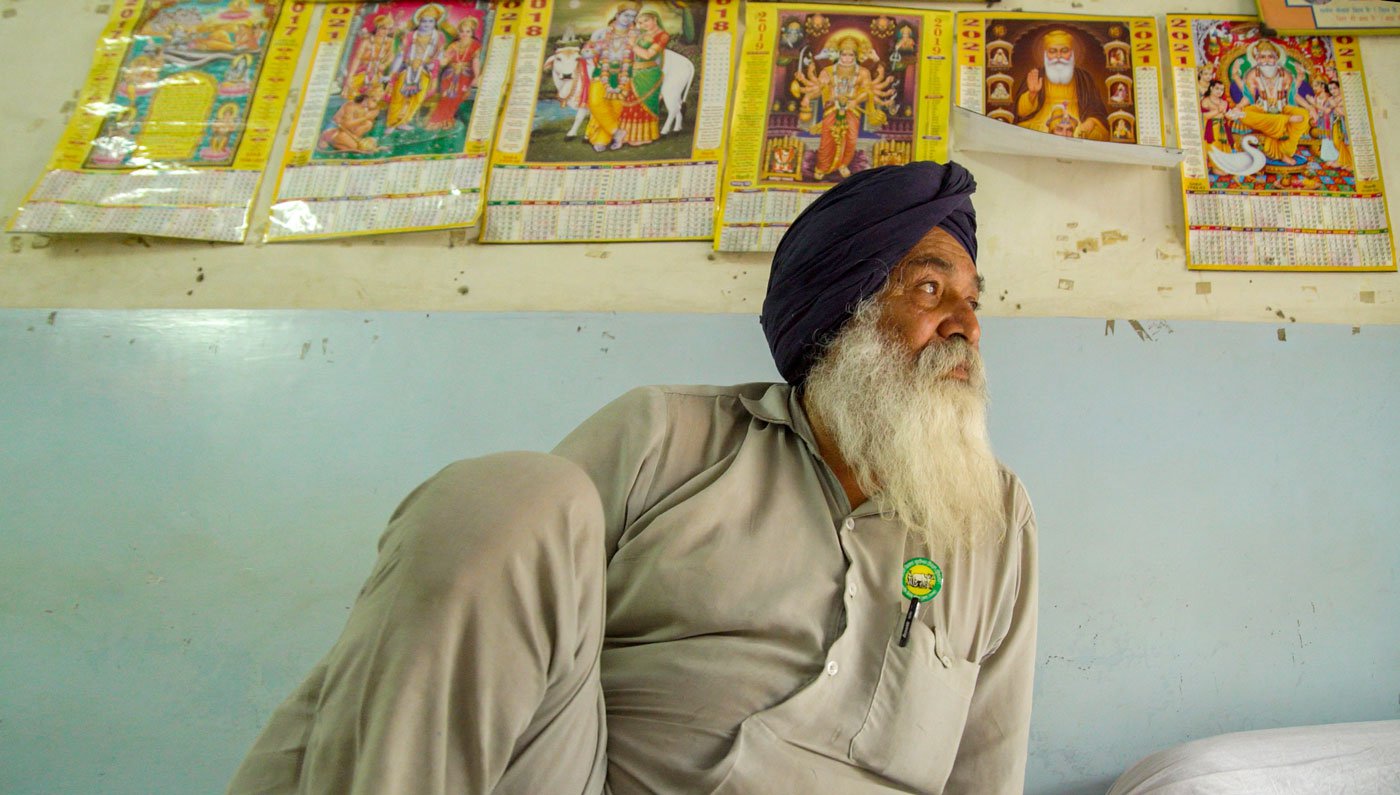
Mahender Singh from Namol village in Sangrur district sitting at his arhtiya’s shop inside the Sunam mandi . Apart from acting as moneylenders, arhtiyas also help with providing the farmers with pesticides, fertilisers and other farming inputs.
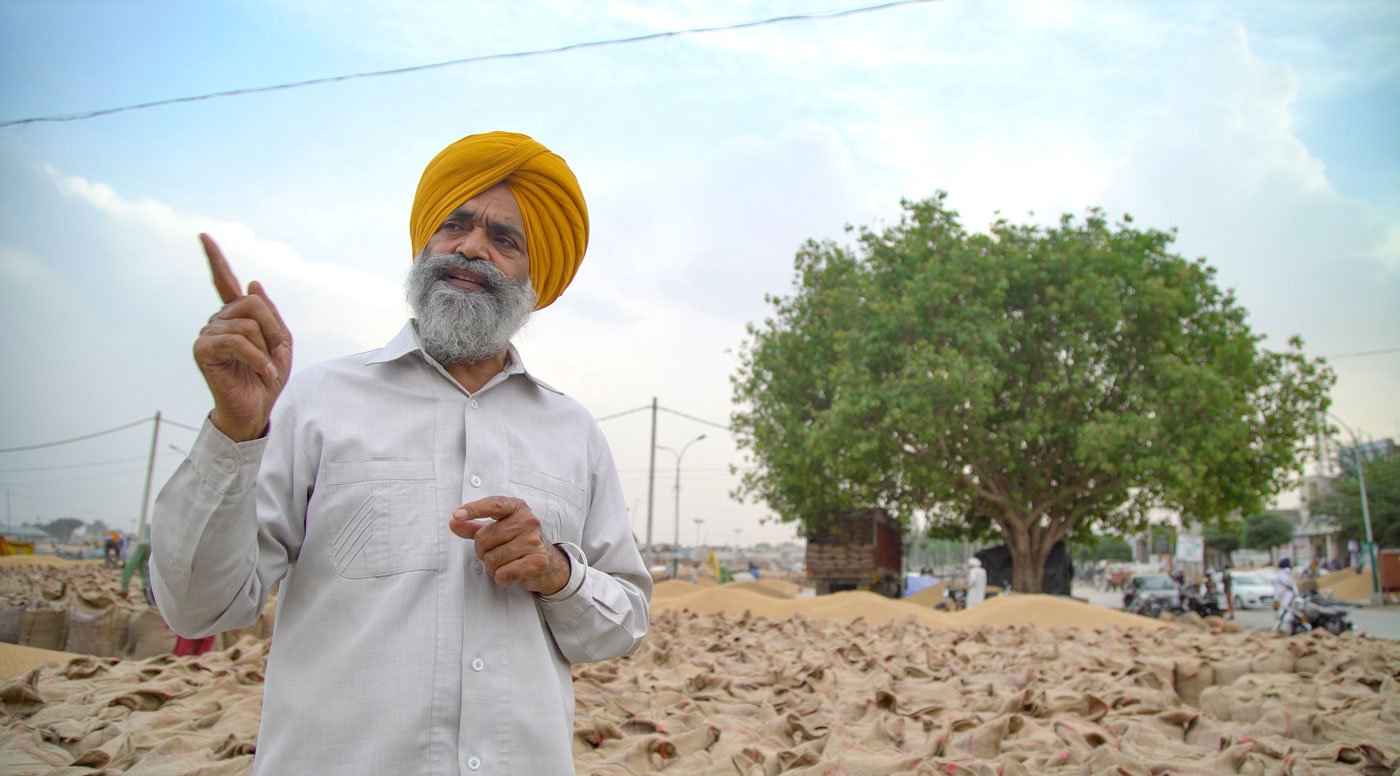
Ravinder Singh Cheema, president of Punjab’s Arhtiyas Association in the Sunam mandi. He says that without an assured MSP the farmer will be exploited by the private trader
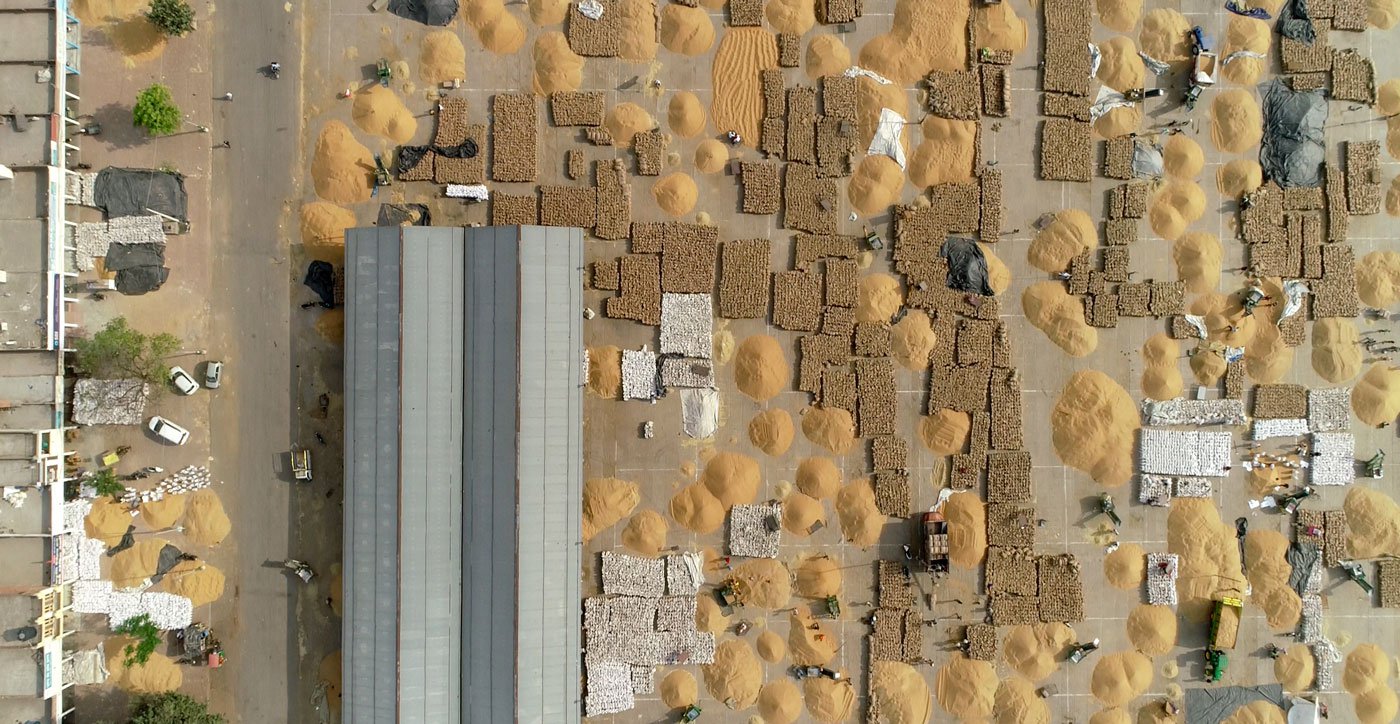
The Sunam mandi in Sangrur district is a principal yard. While the main season of activity in the state’s mandis is during the wheat harvest (April) and the paddy harvest (October-November), these marketplaces function throughout the year, trading in other crops like pulses, cotton and oilseeds, which also arrive at regular intervals
The photos for this story were taken on April 14-15, 2021.
